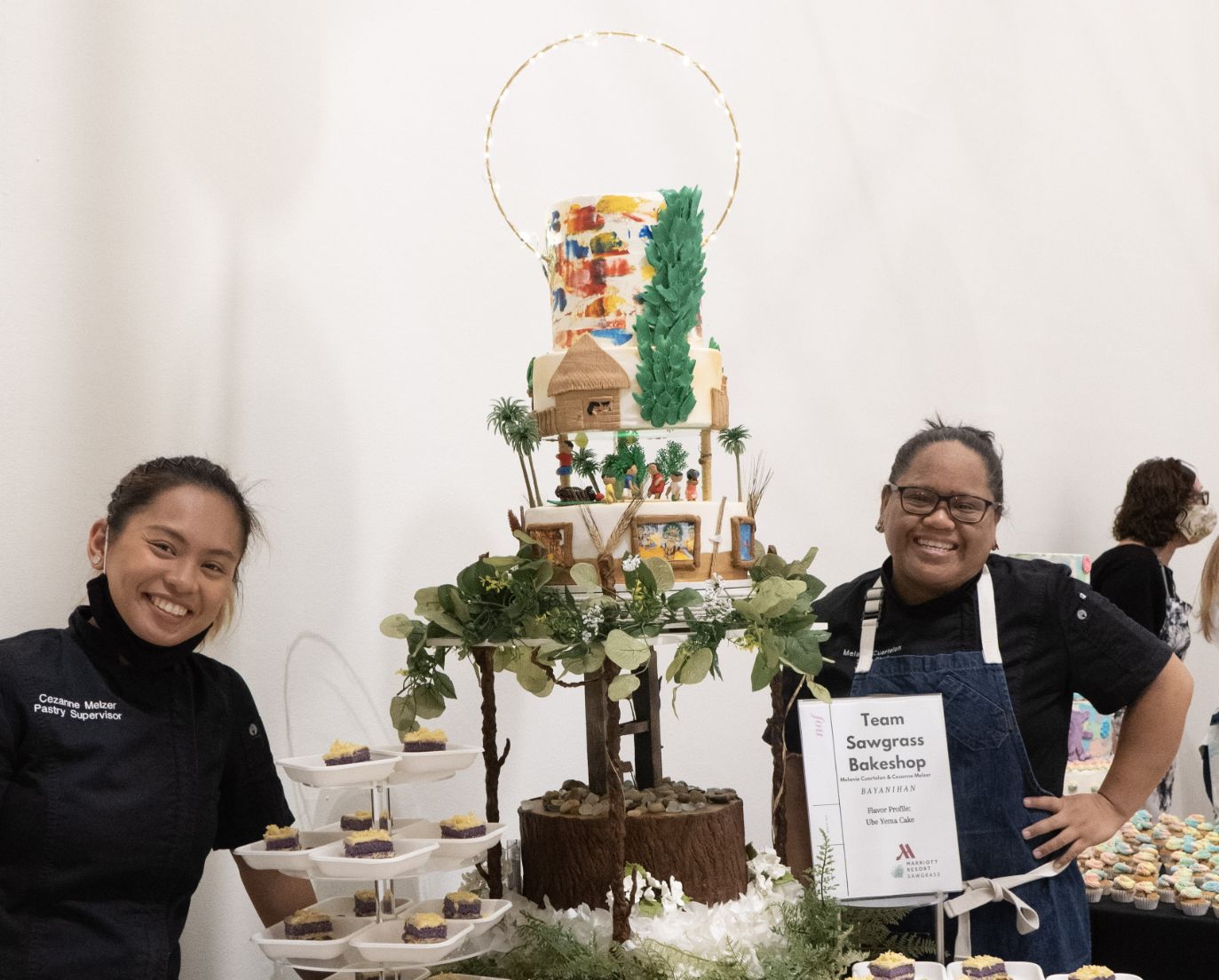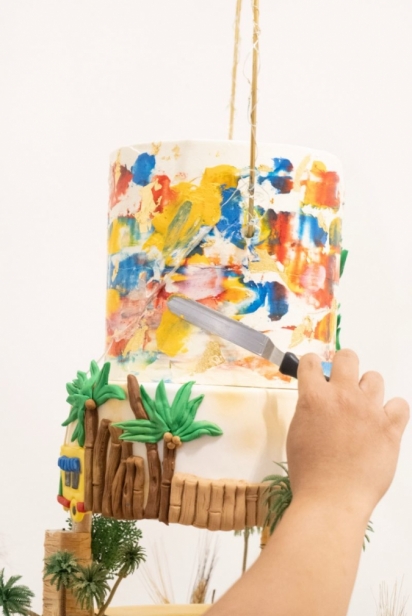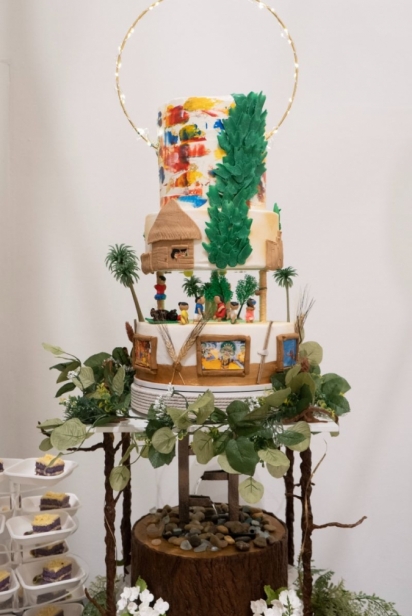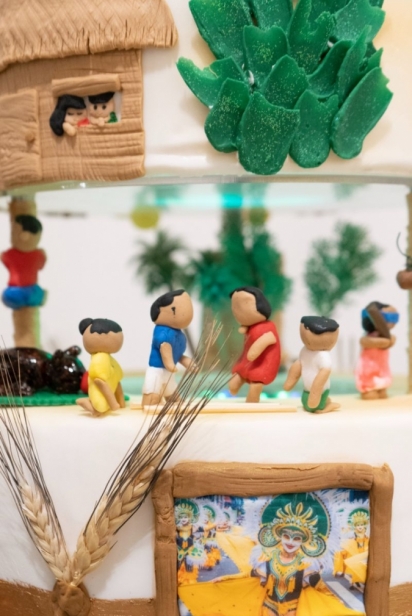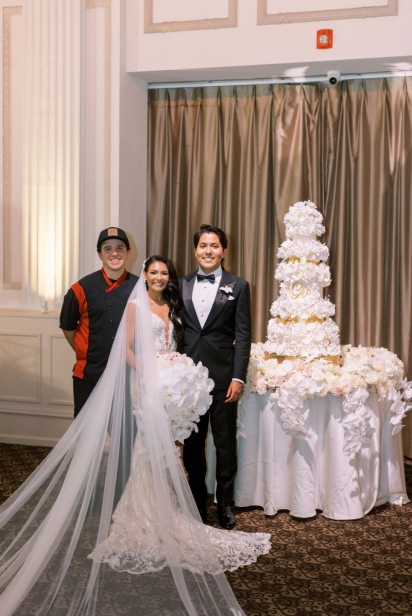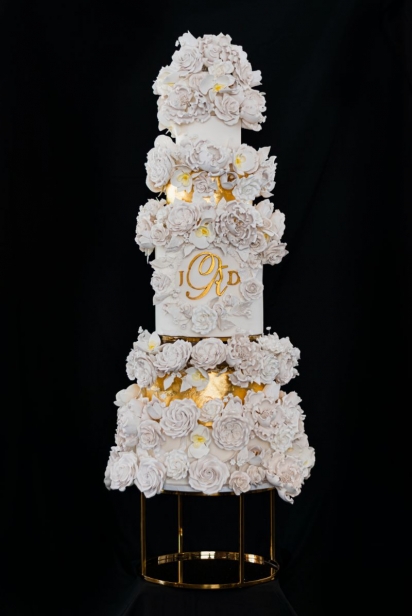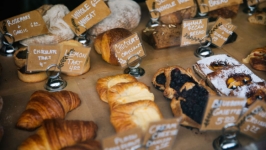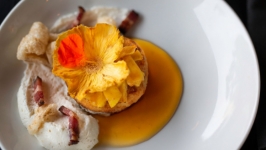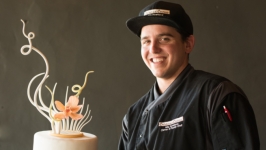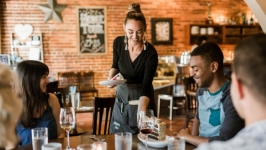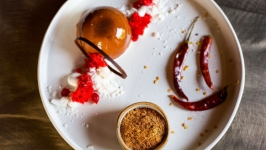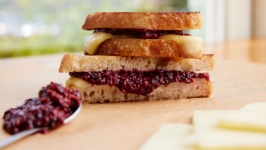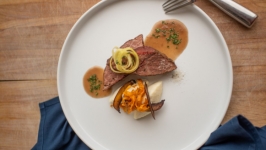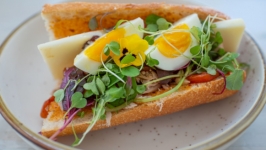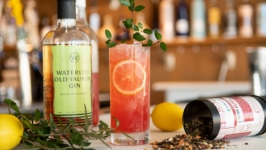Pastry Chefs as Artists
There’s a saying that goes, “cooking is an art and baking is a science.” But when it comes to using pastry as a medium through which to tell a story, baking is both art and science. Cakes for events and weddings often hold special significance and require many hours of design, planning and execution to ensure the story is appropriately (and deliciously) conveyed.
Just ask Sous Chef Melanie Cuartelon of Sawgrass Marriott Golf Resort and Spa and Pastry Chef Cezanne Melzer of Cezie Bakes. As part of a fundraiser for the Neurosurgery Outreach Foundation, they teamed up to create a five-tier cake that represented their Filipino heritage and culture.
“We took significant pieces from our Filipino heritage and incorporated them into our design. The cake theme was ‘bayanihan,’ which represents community, when neighbors unite and work together without reward,” said Cuartelon. “Houses in the Philippines were made from lighter material like bamboo, which is represented in the design. So bayanihan also meant helping one’s neighbor to move their bahay kubo (a house), literally!”
Flavor is just one factor when creating a cake that tells a story. “The bottom tier was decorated with edible rice paper, which had two meanings,” said Cuartelon. “First, it represented the rice fields in the Philippines. Rice is a culinary and economic staple in our culture. Second, the rice paper was placed to look like sampaguitas, which is the national flower of the Philippines. The second tier was a tree trunk with a working fountain, representing the beautiful waterfalls and natural elements that can be found in the Philippines.”
The top three tiers were on a rotating base to ensure all details of the cake could be displayed, including edible images of traditional Filipino festivals. “We included the Manila Carnival and the Sinulog Festival in Cebu, with scenes of colorful costumes, traditional dances and games, as well as representation of some traditional foods like lechon baboy (slow roasted whole pig),” says Cuartelon.
The fourth tier represented a bahay kubo, which is also known as a nipa hut, homes built on bamboo stilts and usually made with material like nipa grass and wood. “This cake design was truly a labor of love and respect for our heritage and the Filipino people,” Cuartelon says. The fifth tier featured an abstract design made with buttercream and gold leaf to represent the colors of the Philippine flag (yellow, blue, red, white and hints of gold), topped with a gold circle wrapped in twinkle lights to represent the sun and stars on the nation’s flag.
Designing a wedding cake can also be a labor of love. These special cakes are often used to convey symbolic elements of a couple’s relationship. “A lot of times customers want embellishments that are personalized, or pets that we need to incorporate and make sure they are visible but not the main focus,” says Bailey Rowland, who with her husband Chef Nils Rowland owns Crème de la Cocoa bakery in St. Augustine. “The first thing we take into consideration is the customer’s design ideas and flavors – flavors are important here because it will dictate some of the structure as some flavors are not as stable as others.”
Chef Rowland and his team of chefs draw a sketch to present an overall feel for the cake and the flow of the design, which also helps determine the structure of the cake. “Certain designs need different supports to ensure stability,” Rowland says.
Making a cake that tells a story “can be harder than people think,” says Rowland. “When they’re done, our bakers step back and look at the cake to make sure it’s finished. Does it all mesh well and have a good flow to it? Does it convey the story, so that if you look at the cake having no previous knowledge of what is going on can you tell what the story is and follow the scene? The last thing you want is for the cake to feel like it’s missing something.”
Art, science, architecture, engineering: those are all aspects of daily life for pastry chefs, who use flour, eggs, butter, sugar and other ingredients to create an edible story.


